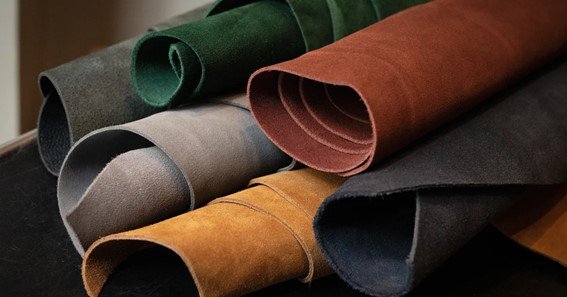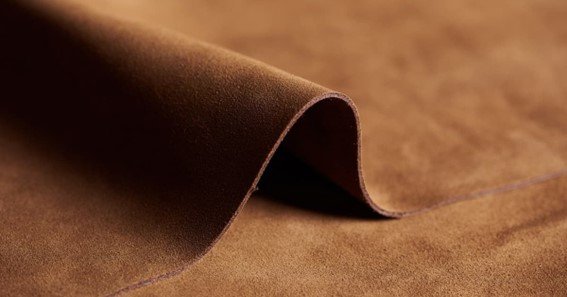What is nubuck? This question is often asked about luxury leather goods. The answer is knowing this material’s unique character and beauty. Soft, silky nubuck leather looks costly. Its durability and unique style appeal to fashion and furniture designers. This in-depth article discuss on what is nubuck, Nubuck’s origins, production, uses, care, and benefits and cons.
What is Nubuck?
Nubuck leather is supple and silky, but it looks costly. Sanding or buffing the hide’s grain side is used to make it. A tiny nap of short protein fibers gives the leather a velvety texture. Suede is created inside the hide, while nubuck is outside. The grain of nubuck is finer and more robust. The leather looks better and feels softer after this procedure. I
t also prolongs its life and reduces wear. Due to its unique look and feel, nubuck is utilized for high-end leather shoes, purses, and furniture. Nubuck breathes well, is flexible, and can eventually turn a gorgeous hue.
With proper maintenance, nubuck can endure for years. It’s ideal for those seeking durable, high-end leather. Nubuck may be dyed and treated in many ways. Thus, it exists in many colors and styles to suit everyone.
Important Facts About Nubuck

Understanding what is nubuck includes its history. Ancient countries tanned leather traditionally, which is how nubuck began. Its smoothness and durability first restricted its use to the strongest.
The term nubuck may have arisen from new buck, the first high-quality deer hide. Nubuck became synonymous with sanding and rubbing, which gives it its characteristic texture. Nubuck production changes with society.
Egyptians, Greeks, and Romans preferred nubuck because it felt valuable and durable. Shoes and armor were made from it. Europe’s upper elite loved suede shoes in the Middle Ages.
During the Industrial Revolution, manufacturing improved, making Nubuck more accessible. Nubuck is utilized in numerous high-end leather goods due to its unusual texture, durability, and versatility.
How is Nubuck made?
To comprehend what is nubuck, you must know its production stages. Due to its strength and durability, nubuck leather is made from the top layer of an animal hide. Tanning prepares the hide for washing and prevents breakdown. After dyeing, the grain side of the leather is sanded or buffed to a fine nap. The leather feels silky because of this.
This process requires care and the ability to provide a consistent, high-quality finish. During the dyeing process, vegetable tannins or chromium stabilize and prolong leather. Several finer abrasives are used for buffing.
The nap is raised and brushed to give the appropriate texture. Final dyeing, finishing, and quality checking ensure the nubuck leather meets the highest quality and appearance standards.
Uses of Nubuck
Because of its versatility, nubuck is popular in fashion and home decor. Shoes, boots, handbags, belts, and wallets made from nubuck are examples of what is nubuck. It’s soft, rich, durable, and sophisticated. Therefore, furniture makers employ it.
Nubuck is utilized in vehicle seats, airplane seats, and other high-use areas that need to look good and last. It makes fantastic jackets, gloves, and caps since it’s elastic and airy. Nubuck is tough, so drumheads and guitar bands use it. Many fields that prioritize style, durability, and comfort use nubuck. People like its unusual feel and good performance.
Caring for Nubuck

To maintain its beauty and longevity, leather must be properly maintained. Learning how to care for nubuck is part of learning what is nubuck. Protect nubuck from stains and water damage with a nubuck and leather spray or conditioner. Regularly using a Nubuck brush may help clean and maintain the nap.
Keep leather objects out of direct sunlight and water to prevent damage or discoloration. Cleaning nubuck requires gentleness. Use a delicate, dry towel to blot spots and avoid solid chemicals and water. Use a nubuck-specific cleaner for difficult places.
After cleaning, treat the leather to restore naps and prevent drying. With these care suggestions, your Nubuck products will last for years and look and work like new.
Advantages of Nubuck
Due to its various features, nubuck is popular. Its luxurious, velvety texture is one of its greatest attributes. Due to its top-grain leather construction, nubuck is durable. This makes it ideal for shoes and furnishings that must look good and last. Nubuck can develop a rich sheen with time, making it more elegant and old-fashioned.
Disadvantages of Nubuck
Nubuck offers many benefits, but buyers should be mindful of its drawbacks. Careful maintenance is needed because it rapidly gets stains and water damage. The soft nap is readily scuffed or scraped, changing its appearance.
Suede leather is more expensive than other leathers because it is manufactured with care and is more sumptuous. Nubuck’s restrictions should be considered while picking it for work.
Conclusion
Finally, what is nubuck? reveals fascinating facts about this lovely leather. Many industries value Nubuck because it looks and feels like silk and lasts a long time. Its extensive history, complex production procedure, and many uses make it valuable and appealing. Nubuck needs adequate care to maintain its attractiveness.
Consider the benefits and cons of Nubuck before using it. Finally, nubuck will always symbolize refinement and luxury, expressing the eternal attraction to quality leather items. That’s all on what is nubuck for this article.
FAQ
What do you mean by nubuck?
Buffing or sanding top-grain leather creates nubuck. Soft and silky.
How is Nubuck different from suede?
Suede is stronger and rougher than nubuck since it’s manufactured from the interior of the hide.
What is nubuck primarily used for?
Nubuck is used to produce luxury shoes, bags, belts, wallets, furniture cushioning, and car interiors because they look and feel expensive and last.
How to maintain nubuck?
To protect the nubuck, apply the correct spritz or conditioner, brush it often to maintain its nap, and keep it out of direct sunlight and water.
What are the pros and cons of nubuck?
Nubuck feels velvety, lasts long, and patinas well. Stains and water damage might occur, and it costs more than other leathers.
Sources:
https://en.wikipedia.org/wiki/Nubuck
https://www.yogifootwear.com/blogs/journal/what-is-nubuck-leather-2










